On July 26, 2023, I gave a demonstration at the NVRA on how to connect via one of the TEVEL satellites.
We were lucky, because on this evening we had a nice pass with 60+ degrees elevation.
The hardware used for this evening:
Radio: Icom IC-705 with 5W controlled with PSTRotator for doppler correction. (this could of course also be done manually) Antenna: The self-made Moxon duoband antenna
Amateur Satellites have always been one of my passions. Immediately after obtaining my Novice License in 2005, I started working on Amateur Satellites, such as VO-52, FO-29, AO-07, AO-51, SO-50, Delfi-C3, AO-29 and not to forget the ISS with a direct connection to the crew and other amateurs via the crossband repeater.
I have the habit of getting active on the satellite thing again every so often. This has to do with the fact that at some point you have worked with everyone who is active on a daily basis via each satellite. For example, from the moment I started, I have been active every 2 years and then inactive for another 2 years. New satellites and amateur stations have now been added and that arouses my interest again.
My first satellite setup 2005/2006
This year I became active again in the satellite event. In recent years, nice satellites have been added, which can mainly be operated well with few resources. And by few resources I mean a Bami walkie-talkie costing a few tens of euros and a DIY antenna costing only a few tens of euros.
Satellites that work well:
Greencube (SSB digipeater), LedSat (SSB digipeater), TEVEL-1,TEVEL-2,TEVEL-3,TEVEL-4,TEVEL-6,TEVEL-7 and TEVEL-8 (FM Transponder).
Mainly the last series of TEVEL satellites, which are very popular at the moment. These are FM Transponders, which pass one after the other in a train. These are not all active at the same time, but every 72 hours one of the 8 satellites is activated in turn. During the weekend, even 3 are activated at the same time. The nice thing about these satellites is that they can be operated at a low elevation angle.
The TEVEL satellites all operate on the same frequencies:
Modulation: FM
Down link: 436.400MHz +/- 10KHz doppler shift.
Up-link: 145.970MHZ +/- 3.5KHz doppler shift.
Another nice thing about these satellites is that D-STAR connections are regularly made.
To work these satellites you need at least a Basic Set / Walkie Talkie with a minimum power of 5W, and this SPLIT can work between 2m and 70cm. This means: received at 70 cm and switched to 2 meters while transmitting.
Doppler Correction
I hear you thinking, that Doppler shift, how do I solve this? This can easily be solved by pre-programming a number of channels in which the SPLIT function is included, and with each channel programmed with different frequencies for the Doppler correction.
A set of channels can look like this:
| Kanaal | Naam | TX | RX |
| 1 | TEVEL [#—-] | 145.970MHz | 436.410MHz |
| 2 | TEVEL [-#—] | 145.970MHz | 436.405MHz |
| 3 | TEVEL [–#–] | 145.970MHz | 436.400MHz |
| 4 | TEVEL [—#-] | 145.970MHz | 436.395MHz |
| 5 | TEVEL [—-#] | 145.970MHz | 436.390MHz |
It may be noticeable that no Doppler correction is applied for TX.
This has to do with the fact that the Doppler correction is 3x smaller on VHF compared to UHF. In this case with FM 12.5khz wide this is negligible.
Tuning is easy, just tune to the channel that provides the best reception, it’s that simple!
This can of course also be done very chicly with a Doppler correction program via the computer (SatPC32, HRD Satellite, PSTRotator Satellite, etc.) for the purists among us, but working without a computer is of course much more satisfying.
Software Tracking/Prediction
Now finally, when and where will it be about or on?
There is a lot of software available for this, the above-mentioned pieces of software can make a prediction and show this on a map, or as a table showing multiple passes (agreements). Of course you would prefer a pass where the satellite passes almost directly above you.
With these types of pieces of software you can see when such an ideal pass takes place.
A useful app for Android and IOS is ISS Detector, a very extensive app that also shows during the pass where you should point the antenna using your phone’s internal compass. So you can make a bracket on your antenna tree in which you clamp the phone and you can manually follow the satellite perfectly for an optimal connection.
Unfortunately, ISS Detector is not free, but it is worth it because it is a very complete tracker. There are probably also free apps available, but I have no experience with those.
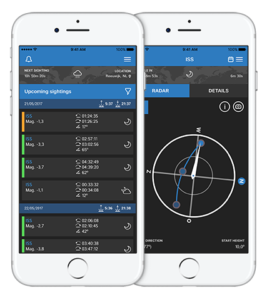

The Antenna
To connect to one of the TEVEL satellites, the antenna below is ideal.
Nice and light in the hand, and of course the bracket for the phone!
The antenna is made up of a Moxon for 2m (2 elements), and inside it is a 5(6) elements 70cm.
The advantage of this antenna is 1 power point for both 2m and 70cm.
Construction description and 3D print parts can be found here: https://pd5dj.nl/?p=3458
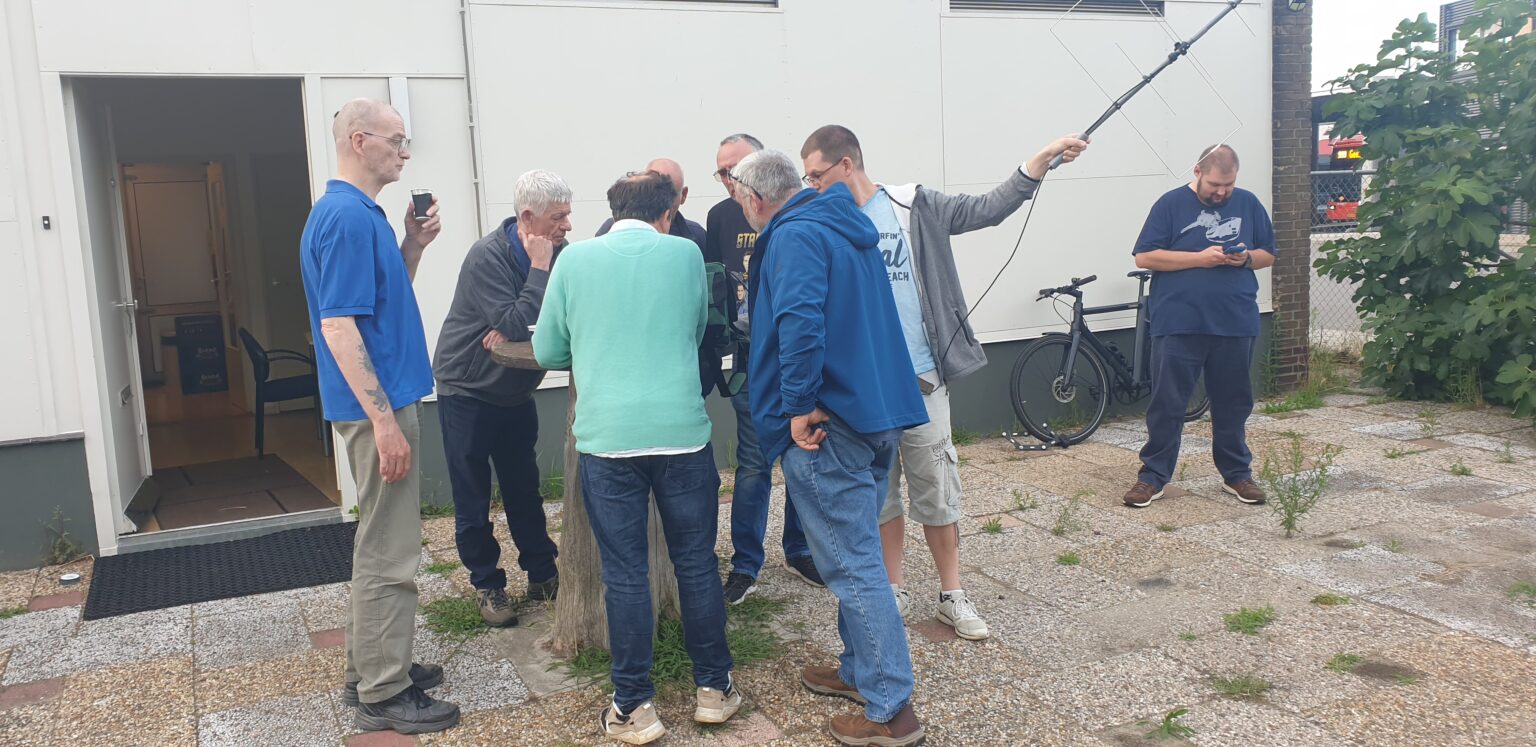

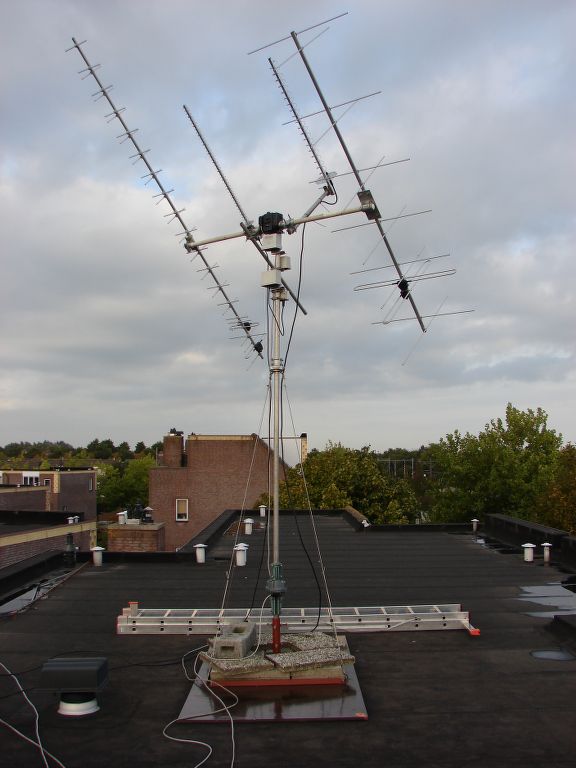
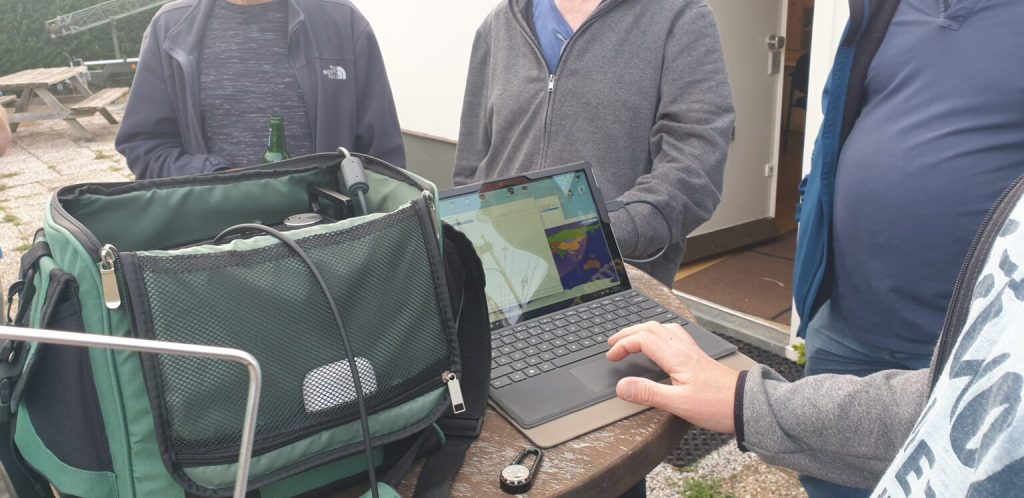
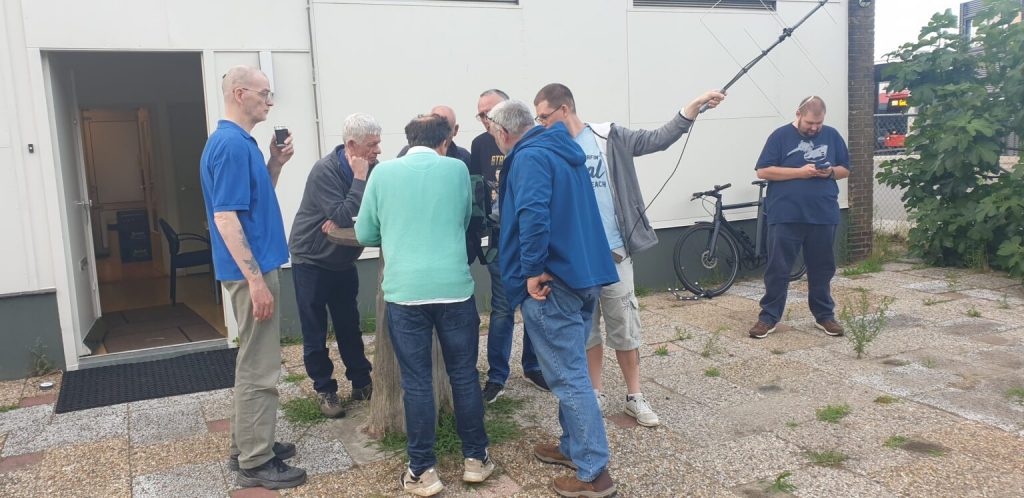
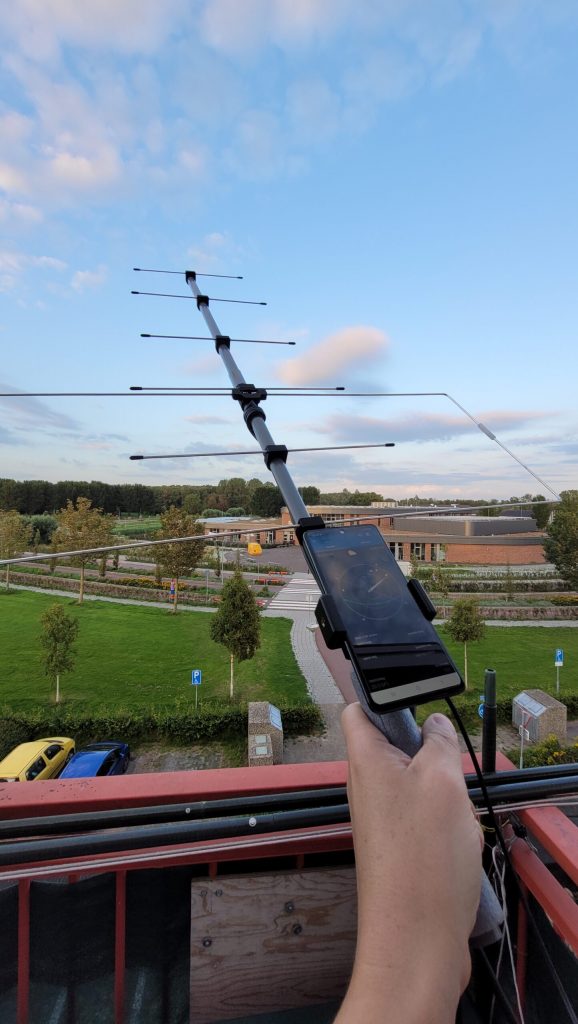
Dude you are a true inspiration for HAM’s. Just love how you live the HAM life. 🙂